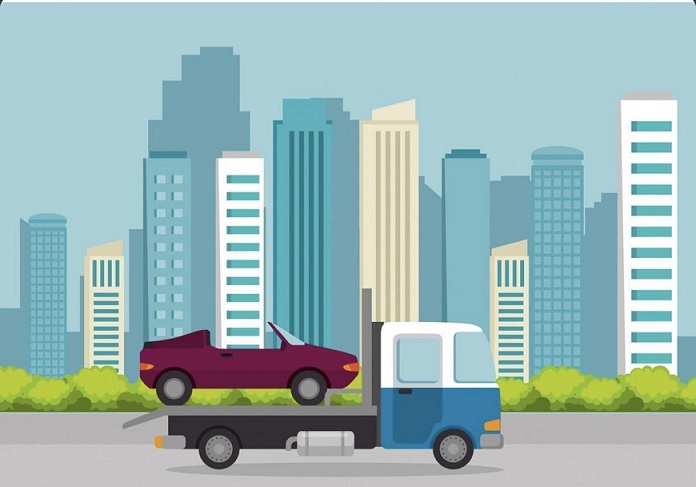Transporting expensive vehicles like cars over long distances to another state requires careful planning and logistics to ensure safety and security. Many things can go wrong when transporting a vehicle on the open road, whether it’s accidents, breakdowns, or even theft.
As cars are a major investment, it’s important to take necessary precautions to deliver them safely to their destination. This article will provide tips on how to find a reputable transportation company, properly prepare the vehicle for transport, and recommend security measures that can give you peace of mind while your car is in transit.
Following these best practices can help make the process of relocating vehicles across state lines a secure one.
Choosing a Reputable Transportation Company
When choosing a reputable transportation company, it’s important to do research and find one that has experience successfully transporting vehicles over several years.
Look for companies that receive good reviews and high ratings from past customers on sites like Google and third-party review sites. It’s also best, when transporting cars to another state, to use a company that has a large, trusted network of professional drivers and well-maintained vehicle carriers. Be sure the company is insured and that the declared value for transporting your vehicle will properly cover its worth.
Additionally, choosing a company that is a member of reputable transport industry associations demonstrates their commitment to high safety standards. See if they offer GPS tracking of vehicles, which provides peace of mind knowing where your car is during transit.
Preparing Your Vehicle for Transport
To adequately prepare your vehicle for transport, carefully remove all valuables, loose objects, and personal items from the inside that could get damaged or tossed around during the journey. Care should also be taken to securely fasten any accessories like exterior parts, spoilers, or rearview mirrors that may detach.
Moreover, check and top off all fluid levels and ensure a full tank of gas is in the vehicle in case of potential delays. Note any existing dents, scratches, or other pre-existing damage on inspection forms with the transport company before loading. When possible, transport new vehicles in their original manufacturer packaging for additional protection.
Read also: Zenzilla website
Ensuring Your Vehicle is Properly Secured During Transit
Making certain your vehicle is properly secured on the carrier is vital for road safety and to prevent damage during transit. The wheels should be chocked and the transmission placed in either gear or park for automatic vehicles.
Tie-downs and straps need to be used to firmly fasten the vehicle in multiple locations, such as around the frame, and tighten them adequately before departure. Enclosed carriers provide better security than open transport which leaves the vehicle exposed to weather elements.
It is also prudent to request photos from the carrier of how your vehicle has been lashed down, which you can keep for your records before they depart on the journey.
Verifying Security Measures with the Transport Company
Before your vehicle hits the road, double-check security procedures with the transport company. Confirm vehicles and drivers passing your car between terminals are company-authorized. Request the planned route be shared so you can track mileage.
Inspect how the vehicle is tied down yourself if possible. Get the driver’s contact information in case issues arise. Ask the company to send photos of the securement for your records. Consider using GPS tracking offered by some transporters to monitor your car’s journey.
Knowing Where Your Vehicle Is During Transit
Staying aware of your vehicle’s location during transit brings reassurance. Reputable companies provide tracking updates either by phone, email, or online.
If GPS is used, you can log into an online portal to view your car’s progress. Request frequent updates if travel delays occur. Notify the company if your expected delivery date changes so rendezvous plans can be adjusted. Visit https://www.wikihow.com/Use-a-GPS to learn how to properly use a GPS for ensured safety.
Remember to update your insurance provider with expected arrival time frames. Proactive communication prevents issues and eases concerns while waiting for delivery.
What to Do if Delays or Issues Arise During Transport
Despite best precautions, unplanned events can delay transit. If periodic tracking updates cease, promptly contact the transport company. Request a status update, new estimated delivery date, and alternative plan. Delays due to weather, breakdowns, or other small problems are common.
However, lack of communication warrants investigation. If damage occurs, record details and photos at pickup before signing documents.
To expedite repairs, file a claim immediately after delivery. Major delays could require canceling the transport and rebooking with an alternate service.
Inspecting Your Vehicle Upon Arrival at Destination
Thoroughly inspect the vehicle for any damage as soon as it arrives. Check for dents, scratches, or fluid leaks, and note the condition on delivery forms. Examine areas like the underside that were covered during transit.
Take detailed photos of any new issues. Require the driver’s signature to acknowledge defects found during delivery. File a claim straight away if damage is present to speed up repairs. Contact the transport company if delivery is significantly late or the vehicle is dirty or unkempt.
Learn more about safe car inspection here.
Tips for Safe Unloading at Delivery Location
Oversee unloading to ensure your vehicle’s protection. Choose a sturdy, level surface to offload. Stand clear as straps and ties are removed in case the vehicle shifts.
Watch closely as it’s driven off the transport carrier. Take photos of the vehicle in its new spot for proof of delivery. Never sign delivery forms until a condition inspection is complete.
Wrapping Up
Carefully planning and taking security precautions every step of the way is key to ensuring your vehicle is safely transported between states.
Choosing a reputable company, properly preparing the vehicle, verifying securement methods, monitoring progress, and thoroughly inspecting upon arrival are all important aspects covered in this guide.
Following these tips will help make the process of vehicle relocation across long distances a smooth and secure one.




